
Browse an alphabetical list of photographs. These historical images portray people, places, and events before, during, and after World War II and the Holocaust.
<< Previous | Displaying results 1526-1550 of 2641 for "Photo" | Next >>
The commanding general of the 9th Armored Division (third from right), and members of the division who won the Distinguished Service Cross pose with the sign placed on the Ludendorff Bridge after its capture. US Army Signal Corps photograph taken by W. Spangle on September 18, 1945, several months after the bridge was captured.
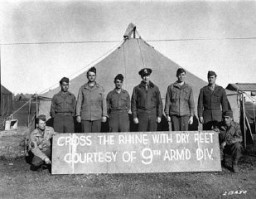
Ludwig Beck, one time chief of the Army General Staff. After his resignation in 1938, Beck became the center of the military resistance to Hitler. He was executed in 1944 for his role in the July 1944 attempt to kill Hitler. Germany, date uncertain.
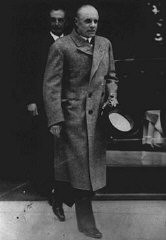
A collection of valises belonging to Jews who were deported to killing centers. These valises are displayed at the base of the railcar on the third floor of the Permanent Exhibition at the United States Holocaust Memorial Museum. Washington, DC, 1993–1995.
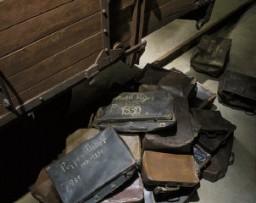
Léon Degrelle, an extreme right-wing Belgian politician and Nazi collaborator. Photo dated 1933–1945.
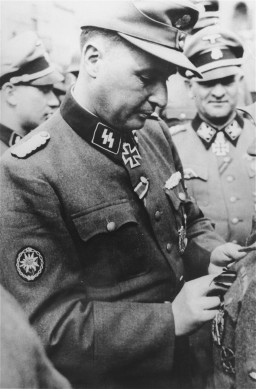
A group of Macedonian Jewish youth, members of a band, pose with their instruments on a makeshift stage in Bitola. September 18, 1930.
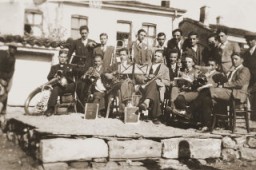
Macedonian Jews leave the Tobacco Monopoly transit camp in Skopje for the deportation trains. Skopje, Yugoslavia, March 1943. The Jews of Bulgarian-occupied Thrace and Macedonia were deported in March 1943. On March 11, 1943, over 7,000 Macedonian Jews from Skopje, Bitola, and Stip were rounded up and assembled at the Tobacco Monopoly in Skopje, whose several buildings had been hastily converted into a transit camp. The Macedonian Jews were kept there between eleven and eighteen days, before being…
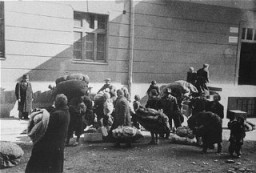
Macedonian Jews prepare to board a deportation train in Skopje. Skopje, Yugoslavia, March 1943. The Jews of Bulgarian-occupied Thrace and Macedonia were deported in March 1943. On March 11, 1943, over 7,000 Macedonian Jews from Skopje, Bitola, and Stip were rounded up and assembled at the Tobacco Monopoly in Skopje, whose several buildings had been hastily converted into a transit camp. The Macedonian Jews were kept there between eleven and eighteen days, before being deported by train in three transports…
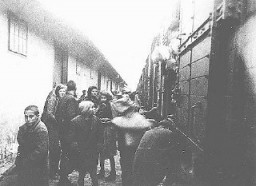
Magdalene Garber with friends and family at the public beach in Wannsee, Berlin, around 1940-1941. There are Nazi flags visible in the background behind Magdalene. Magdalene (“Leni”) Garber was born in January, 1919 in Germany. Her parents were Joseph Garber, a Togolese man, and Johanna Maychrzak, a white German woman. Magdalene grew up in Berlin-Neukölln and worked as a performer from an early age. She was part of several ethnographic shows, including a variety of Mohamed ben Ahmed’s Afrika-Schau…
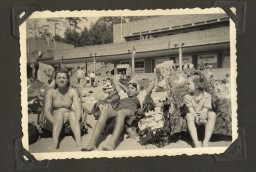
After the defeat of France, a German soldier examines French fortifications along the Maginot Line, a series of fortifications along the border with Germany. France, 1940.
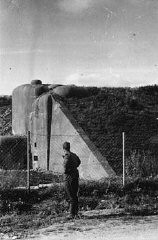
Signed portrait of German physician and sex researcher Magnus Hirschfeld (1868–1935). Hirschfeld sought to educate the public about sexuality. He advocated for the decriminalization of sexual relations between men, which was banned under Paragraph 175 of the German criminal code. Photo dated November 12, 1927.
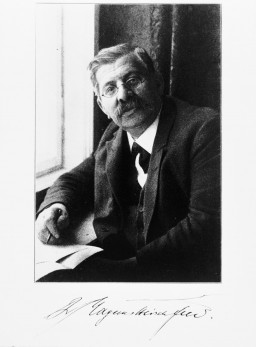
Main entrance to the Auschwitz-Birkenau killing center. This photograph was taken some time after the liberation of the camp in January 1945. Poland, date uncertain.
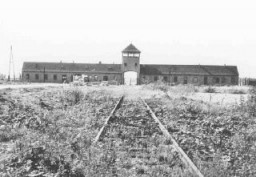
View of watchtower and fence at the Majdanek camp, after liberation. Poland, after July 22, 1944.

Bodies of US soldiers killed by Waffen SS troops during the Malmedy Massacre on December 17, 1944. Photograph taken in January 1945.
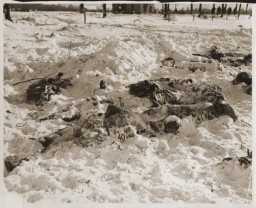
A crowd waits outside the American military court for the announcement of a verdict in the Malmedy war crimes trial of SS soldiers accused of taking part in the massacre of American prisoners of war. Dachau, Germany, July 16, 1946.
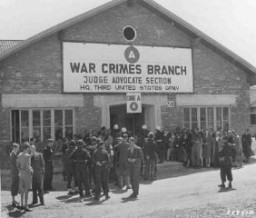
View of the manor house in Chelmno that became the site of the Chelmno killing center. Chelmno, Poland, 1939.
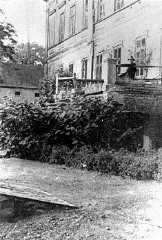
Manzanar relocation center for Japanese Americans, photographed by Ansel Adams. Bird's-eye view of the grounds from the guard tower.
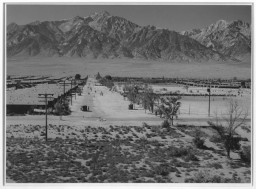
Map of Theresienstadt from an original document (1942-1945) and mounted in an album assembled by a survivor.
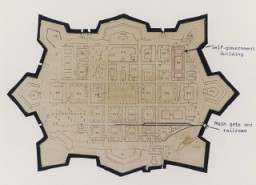
Marcelle Bock (born Marcelle Burakowski) was born in 1931. She was the oldest of three girls. She had twin sisters, two years younger than herself, named Berthe and Jenny. Her father worked as a tailor of men's overcoats. Marcelle is ten years old in this photograph. Her sisters are eight years old. Marcelle, her mother, and sisters were arrested during the roundup of July 16-17, 1942, and taken to the Vélodrome d'Hiver in Paris, France. Marcelle managed to escape during transit from…
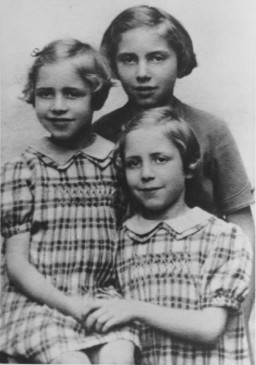
Fascist supporters during the "March on Rome," after which Fascist leader Benito Mussolini was appointed Italian Prime Minister. Italy, October 1922.
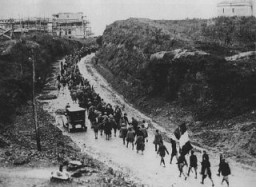
A march supporting the Nazi movement during an election campaign in 1932. Berlin, Germany, March 11, 1932.
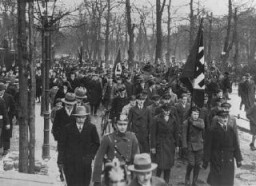
Margot and Anne Frank before their family fled to the Netherlands. Bad Aachen, Germany, October 1933.

Fifteen-year-old Marie Doležalová testifies for the prosecution at the RuSHA Trial. She was one of the children kidnapped by the Germans after they destroyed the town of Lidice, Czechoslovakia, in June 1942. Nuremberg, Germany, October 30, 1947.
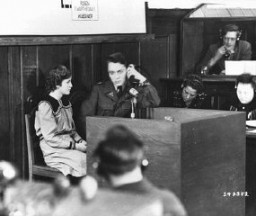
Studio portrait of Martha Sharp. Martha and Waitstill Sharp, American Unitarian aide workers, helped thousands of Jews, intellectuals, and children in Prague, Lisbon, and southern France in 1939–1940.
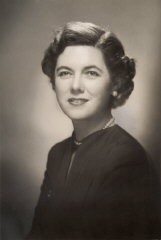
Martin Niemöller, a prominent Protestant pastor who opposed the Nazi regime. He spent the last seven years of Nazi rule in concentration camps. Germany, 1937.

German naval officer Martin Niemöller (top, foreground) commands a U-Boat during World War I. Flensburg, Germany , ca. 1914–17.

We would like to thank Crown Family Philanthropies, Abe and Ida Cooper Foundation, the Claims Conference, EVZ, and BMF for supporting the ongoing work to create content and resources for the Holocaust Encyclopedia. View the list of donor acknowledgement.